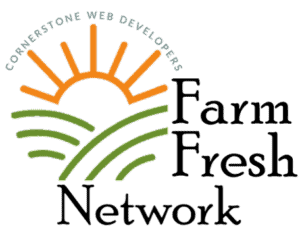Farm costs, inflation and competitors’ strategies influence how farm markets across the U.S. price their commodities and food items.
This year’s Fruit Growers News Farm Market Pricing Survey shows what leading farm marketers across the U.S. are charging for fruits, vegetables and other food.
More than 180 marketers from 34 states participated, with most participants from Michigan (19%), Pennsylvania (13%), New York (8%), Ohio and Illinois (7% each).
Click to enlarge. Photo information at bottom of story.
Similar to the most recent farm market pricing survey (2019), conventionally grown, already picked items was the leading category, garnering 57% of sales. Conventionally grown pick-your-own was 28% with organic already picked at 11%.
Competition check
For most farm market managers, determining prices involves visiting competing area markets and grocery stores, viewing wholesale prices online and customer conversations.
“We watch other markets, wholesale prices and if we get it earlier than our competitors! Plus cost inputs,” said an Ohio market owner.
“We stay in the neighborhood of competition, but we have been doing this for 20 years and have a pretty good idea what we need,” said a Pennsylvania market. “Inflation has made it more difficult as expenses have changed more quickly.”
A Midwest farm market and CSA coordinates with other area growers to “reach a general pricing consensus to avoid undercutting other businesses on the same commodity.”
>>Download today!<<
Input costs, especially H-2A labor, were the biggest factors for others.
“Generally, we try to stay at the same price for 2-3 years and then go up. Lately, we have to factor this in more often as staffing, fuel, fertilizers, packaging, etc., have all skyrocketed,” said another.
The real deal
Brian Moyer, education program associate with Penn State Extension and founder/director of PA Farm Markets, noticed a substantial number of respondents base their prices on supermarket pricing.
“I understand why some folks do it,” Moyer said. “They are viewed as competition. To a certain extent, they are.”
“However, produce departments in grocery stores do their best to look like a farm market because of customer perception that produce from the farm is the freshest and highest quality,” he said.
Another typical strategy is adding a set up-charge of 10%, 20% and even 30% higher than local market prices. Scarcity in the local market as well as competitors’ prices are important considerations for a Connecticut conventional and organic apple and pumpkin seller.
One Washington seller of conventional and organic fruit charges wholesale plus 20% to 50%.
“We think through the time, labor and materials that go into the crop before we determine the price,” said a Michigan vegetable marketer.
The “10% rule” can help determine correct pricing, Moyer said. If 10% of a market’s customers complain the price is high, the store is probably pricing correctly. Some respondents use a “value pricing” method, where products are priced higher as an indicator of quality, he said.
While market conditions are a factor, a Michigan marketer of organic sweet corn, peppers, tomatoes and pumpkins noted there’s an aspect of uncertainty when setting prices: “Market demand, competition and a dart board.”
Moyer said he was glad most respondents use some form of the “Three C’s” of pricing — costs, customers and competition. Understanding cost of production, identifying customers and determining where their business compares to the competition are important, he said.
Red raspberries, blackberries and sweet corn are the top three commodities bringing the highest average per-pound prices for conventionally grown items that are already picked, and conventionally grown pick-your-own items. Cherries and blueberries are fourth and fifth, respectively, for pre-picked, with strawberries fourth and blueberries fifth for pick-your-own. For organic items already picked, sweet corn, red raspberries, pumpkins, strawberries and blueberries lead the pack.
Apple varieties fetching premium prices include Honeycrisps, EverCrisps, CandyCrisps and SweeTangos. Heirloom tomatoes, white and donut peaches, Providence sweet corn, Honeoye strawberries and white pumpkins are also price standouts.
— Doug Ohlemeier, assistant editor
Top photo: The average price farm marketers charge for whole pies is $14.60. Photo by Doug Ohlemeier.
Second photo: Sweet corn on display in Scott’s Country Market at Long & Scott Farms in Mount Dora, Florida. Photo courtesy Long & Scott Farms.
Third photo: Buckland Farm Market, Warrenton, Virginia. Photo by Debbie Eisele.
Bottom photo: Heidi’s Farmstand and Bakery in Lowell Charter Township, Michigan, has greenhouses to supply leafy greens, bell peppers and other vegetables during the winter. Photo by Chris Koger.
The post Survey shows … inflation, competition factor in farm market pricing appeared first on Vegetable Growers News.
